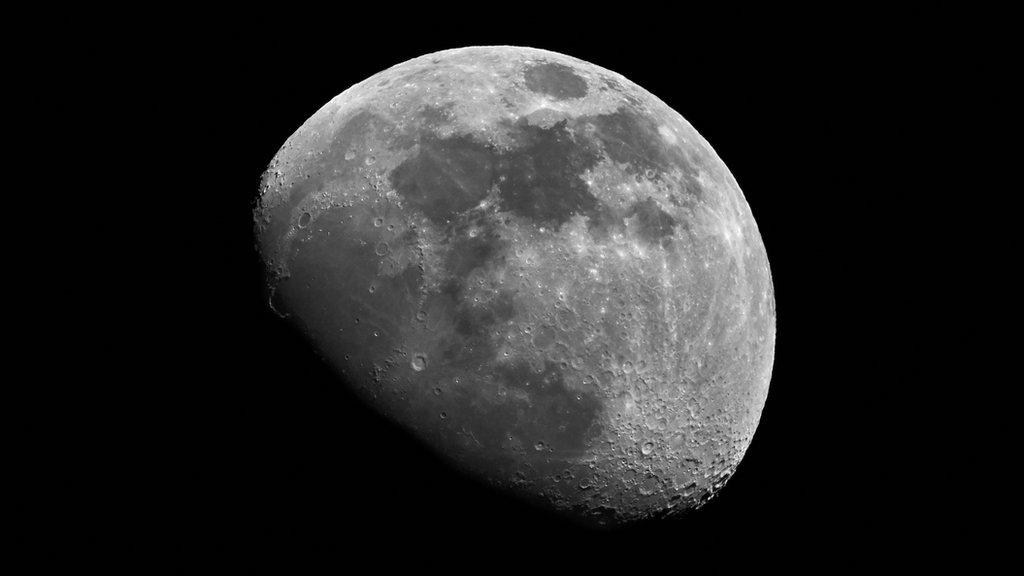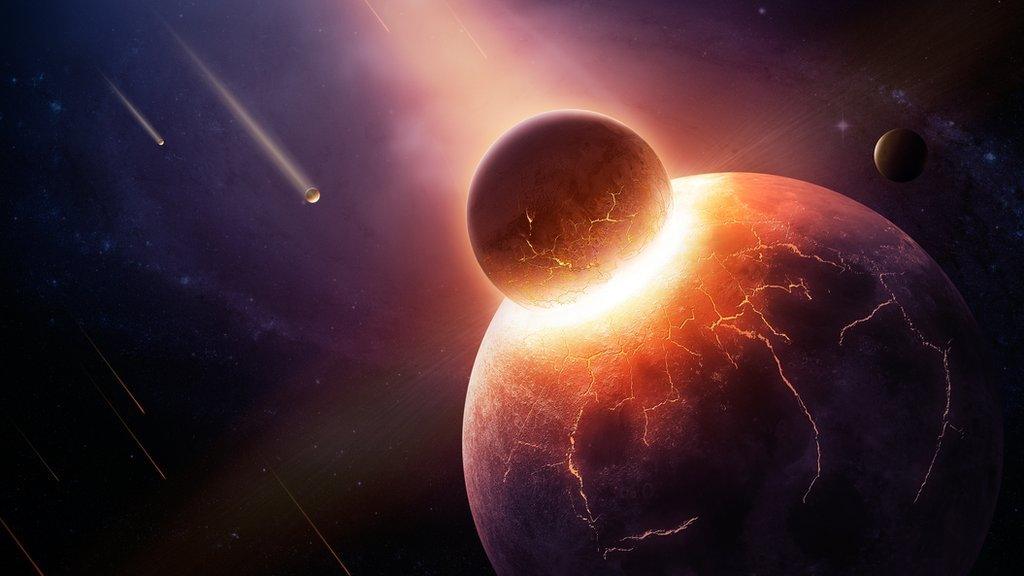Did a huge collision between the Earth and a planet-sized rock create the Moon?
- Published
- comments

How was the Moon created, and what is it made from?
These are just some of the questions scientists at the University of New Mexico have been trying to answer by studying moon rock samples brought back from the Apollo missions.
From looking at these samples they believe they have found evidence to support a theory of how the Moon was created.
It's all to do with oxygen found in the rocks on our lunar neighbour.
How was the Moon created?

The theory that most scientists believe to be true, is that a giant Mars-sized rock called Theia crashed into the Earth around 4.5 billion years ago.
This collision produced enough heat to create liquid rock - or magma - oceans and sent lot of rock and other debris into orbit around the Earth.
This debris from Earth and Theia's impact fused together to form the Moon.
The newly formed Moon then began orbiting around the Earth.
What do the new findings reveal?

Nasa's Johnson Space Center has a significant collection of lunar material
Past computer recreations of the big crash between Theia and Earth suggest that the Moon should be made up mainly of Theia.
But what puzzled scientists is that rock samples from the Apollo missions to the Moon show that its composition is very similar to that of Earth.
New research, by Erick Cano and his team at the University of New Mexico, looked at the rock samples from the Moon once more.
Erick's team found the rocks had different levels of oxygen in them, with rock from the centre of the Moon having the most variation.
That suggests that the middle of the Moon could actually be mostly made from Theia, which supports the original theory from the computer recreations, not that the Moon is very similar to Earth.
The scientists think that earlier research on the rock samples from the Apollo missions that showed a similarity to Earth worked off averages, instead of individual findings, meaning that this discovery would have been missed.
- Published8 August 2018

- Published4 October 2017

- Published9 February 2019

